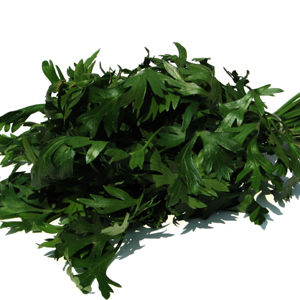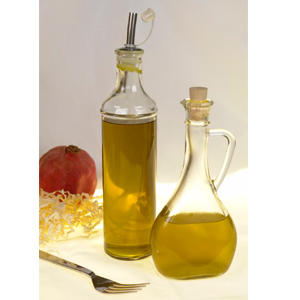See more in our Learning Center >
Herbs are used for flavoring and enriching the flavor and/or odor of foods. Different parts of the plant are used for different flavors. Leaves, seeds, fruits, buds, barks, or roots are commonly used.

Besides helping flavor foods, herbs may offer additional benefits of helping to reduce the use of salt. Research is finding many culinary herbs (both fresh and dried) have antioxidants. See medicinal uses of herbs.
Cooking with herbs

When harvesting herbs from your own garden the ideal time for picking is in the morning after the dew has dried but before the sun gets hot. This ensures the best flavor and storage quality. Oryou can purchase herbs close to the time you plan to use them.
Wash herbs when you are ready to use them. Wash smaller amounts of herbs thoroughly under running water. Shake off water; pat off any remaining moisture with clean paper towels.
Fresh herbs are usually added toward the end in cooked dishes to preserve their flavor. Dried herbs are most often added at the beginning of the cooking process.
Herb/Food Combinations
The flavor of certain herbs naturally pair with the flavor of other foods. Take a look at some ideas to help you start combining fresh herbs with your foods.
Allspice – fruit desserts, meats
Basil – tomatoes, pesto, salads, pasta sauce, peas, zucchini
Bay leaves – soups and stews, grilled meats
Chives – dips, potatoes, tomatoes
Caraway seeds – breads, cabbage, carrots, potatoes
Celery seeds – tomatoes, salads
Cinnamon – baked goods, fruits, beverages
Cloves – baked goods, hearty meats
Coriander – Mexican dishes, soups
Cumin – Mexican dishes, meats, cheese, beans
Cilantro – Mexican, Asian and Caribbean cooking, salsas, tomatoes
Dill – fish, green beans, potatoes, tomatoes,carrots
Fennel seeds – sausage, fish pizza seasoning
Fennel bulb – fresh salads, relishes
Ginger – baked goods, Asian dishes, vegetables
Marjoram – meats, Italian dishes, vegetables
Mint – peas, tabouli, tea, carrots, fruit salads, parsley
Oregano – peppers, tomatoes, chicken, Greek, Mediterranean, and Mexican
Parsley – curly leaf is most common, but flat-leaf or Italian parsley is more strongly flavored and often preferred for cooking. Try it in potato salad, tabouli, and soups
Rosemary – chicken, fish, lamb, pork, roasted potatoes, soups, stews, tomatoes
Sage – poultry seasoning, stuffing
Savory – beans, cheese, eggs
Tarragon – chicken, eggs, fish
Thyme – eggs, lima beans, potatoes, poultry, summer squash, tomatoes
Winter Savory – dried bean dishes, stews
Herbal Vinegars
Herbal vinegars are easy to make and are wonderful culinary compliments. They can be used in a variety of ways, and especially in any recipe that calls for vinegar. They may be used as flavorings added to sauces or directly to the dish itself, and as a dip for crusty breads.
Typically red and white wine vinegars and rice vinegars are the most often used; white vinegar has a sharper taste than red, white wine and rice vinegars, but is still an excellent choice with some herbs. Cider Vinegar is also used and has a taste of its own. Make sure to experiment with flavors as it has a tendency to overpower the herbs.
To make flavored herbed vinegars use three or four 2 inch sprigs of fresh herb per cup of vinegar. If using dried herbs, use 1/4 cup of herb per cup of vinegar. If using hot peppers, garlic, use 1 garlic clove or 1 pepper per cup of vinegar. Place the herbs in sterilized jars or decorative bottles. Slowly heat the vinegar, but don’t boil it. Let it cool down, and then pour the warm Vinegar over the herbs in the jars. Place the jars in a dark place. The vinegars can be used in 3-4 weeks or up to a year later. Have fun experimenting with different variations of herbs and vinegars. Here are a few to try:

Rice Vinegar – garlic, dill, savory, sage, rosemary, parsley, basil, tarragon, and thyme
Cider Vinegar – lovage, lavender flowers, raspberries
White Wine Vinegar – chive, dill, garlic, savory, sage, borage, basil, lavender flowers, fennel, parsley, rosemary, tarragon, thyme
Red Wine Vinegar – garlic, oregano, thyme, basil
Herbal Oils
Herbal Oils are easy to make and are wonderful culinary compliments. They may be used as marinades, flavorings added to sauces, directly to the dish itself, and as a dip for crusty breads.
To make an herb-infused oil: Place cleaned and chopped fresh herbs, about ½ cup or (one half the amount if using dried herbs into a non-metal pan with one cup of oil. (Olive, peanut, safflower, or sunflower oil is commonly used.) Gently saute the herbs in the oil until it’s fragrant and warm. Saute gently and do not boil the mixture. Cool and then strain.
For serving place in decorative bottles, and store in the refrigerator. Oil is best used fresh but may be stored in the refrigerator for a few weeks. Avoid un-refrigerated use since there are no preservatives. Oil and herb proportions may be adjusted to intensity and taste. Try the following oil/herb combinations:
Olive Oil – garlic, oregano, basil, rosemary, lemon grass, sun-dried tomatoes
Sunflower Oil – garlic, dill, basil
Safflower Oil – ginger, basil, garlic
Copyright© 2019 by David R. Card